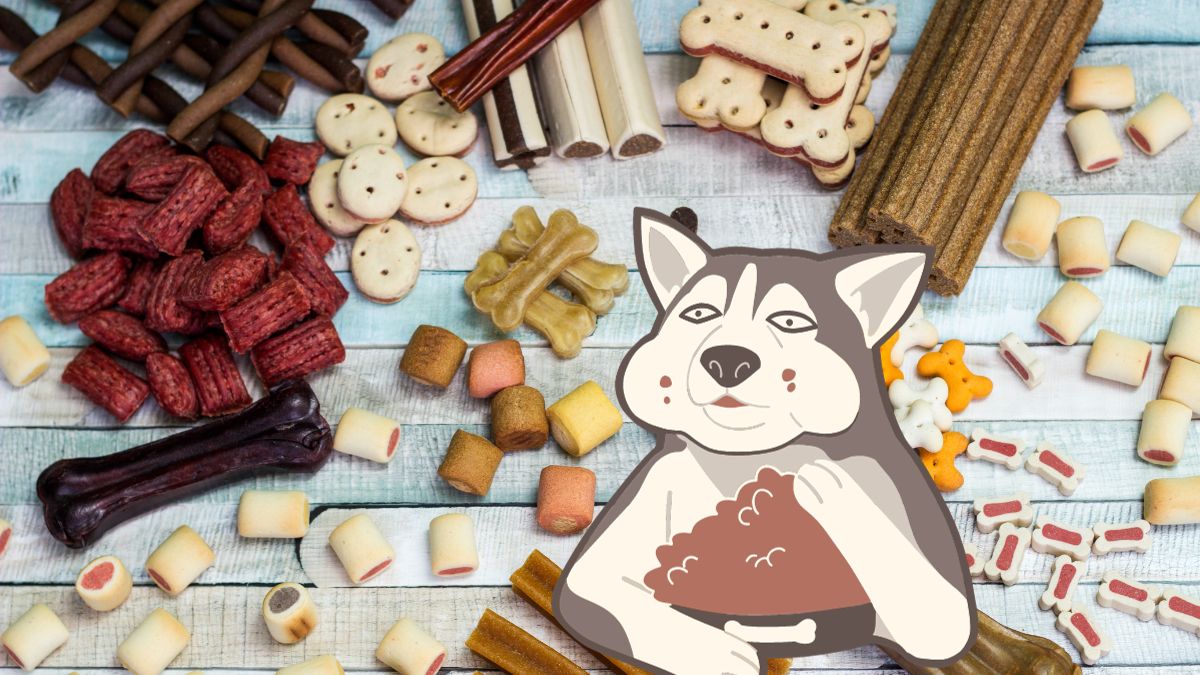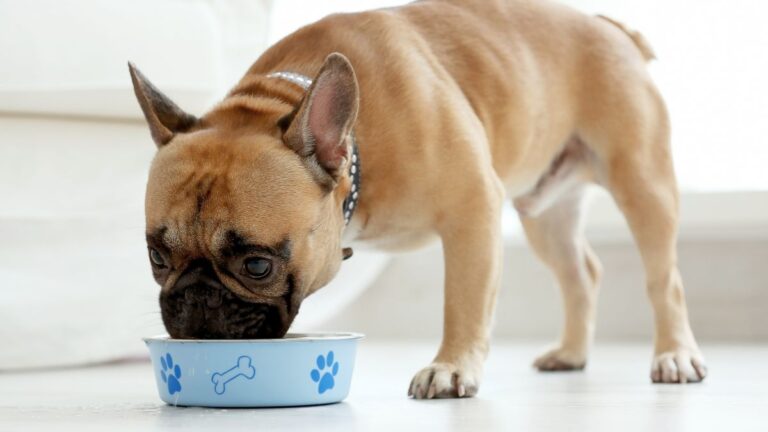Unveiling the Best Pet Food Reviews 2025

Introduction
Today’s article on Best pet food reviews. As responsible pet owners, we understand the significance of providing our beloved furry companions with the best nutrition possible. A well-balanced and nutritious diet is essential for their health, well-being, and longevity. With a plethora of pet food options flooding the market, selecting the right one can be a daunting task. In this article, we will conduct an in-depth review of some of the best pet foods available, considering their ingredients, nutritional value, and overall quality.

Someone Best Pet Food Reviews
1. Blue Buffalo Wilderness Grain-Free Dog Food:
Blue Buffalo Wilderness Grain-Free Dog Food is a popular choice among dog owners who prioritize a grain-free diet for their canine friends. This formula features high-quality deboned chicken, sweet potatoes, peas, and other natural ingredients. Rich in protein and free from artificial preservatives, flavors, and colors, this food promotes healthy muscle development, energy levels, and a shiny coat. Additionally, the inclusion of essential vitamins and minerals supports the overall immune system and joint health.

Blue Buffalo Wilderness Grain-Free Dog Food
2. Royal Canin Veterinary Diet Urinary SO Dry Cat Food:
For cats with urinary health issues, the Royal Canin Veterinary Diet Urinary SO Dry Cat Food is highly recommended by veterinarians. This specialized formula is designed to promote a urinary environment unfavorable to the development of urinary crystals and stones. It helps in reducing the risk of recurrent urinary tract infections and maintains an optimal pH balance. This cat food contains a precise blend of nutrients that support kidney health and maintain a healthy urinary tract.
3. Orijen Original Grain-Free Dry Cat Food:
Orijen Original Grain-Free Dry Cat Food is a top-notch option for cat owners looking for a biologically appropriate diet. Packed with 85% premium animal ingredients, this high-protein formula mimics the diet cats would consume in the wild. Free from artificial additives and grains, Orijen ensures your feline friend receives the nutrients they need for strong muscles, healthy skin, and a glossy coat. The inclusion of organic meats and natural sources of vitamins and minerals further enhances the food’s nutritional value.

ORIJEN® Dry Original Cat Food Premium, High Protein, Fresh & Raw Animal Ingredients
4. Kaytee Forti-Diet Pro Health Guinea Pig Food:
Kaytee Forti-Diet Pro Health Guinea Pig Food is tailored specifically for the nutritional needs of guinea pigs. This pellet-based diet provides a balanced mix of fiber, vitamins, and minerals for optimal guinea pig health. Fortified with Vitamin C, which is essential for guinea pigs as they cannot produce it on their own, this food supports their immune system and overall well-being.

Kaytee Forti-Diet Pro Health Guinea Pig Food
5. Zupreem Natural Medium/Large Bird Food:
Zupreem Natural Medium/Large Bird Food is a nutritious choice for medium to large parrots, cockatoos, and other hookbills. Enriched with essential vitamins, minerals, and amino acids, this pelleted diet helps maintain vibrant plumage, strong bones, and overall good health. Made with natural ingredients, Zupreem ensures that your feathered companions receive a well-balanced diet without any artificial colors or flavors.

ZuPreem Food Breeding Fruit Tiel 2lbs
Best Dog Foods Review
Here are some of the best dog foods that have consistently received positive Best Pet Food reviews and are known for their quality ingredients and nutritional value:
1. Orijen:
Orijen is highly regarded for its biologically appropriate formulas, which mirror a dog’s natural diet. They use fresh, regional ingredients and are rich in protein with no artificial additives.
2. Acana:
Made by the same company as Orijen, Acana offers high-quality, protein-rich dog foods with a focus on using regional ingredients and avoiding unnecessary fillers.
3. Blue Buffalo Wilderness:
This grain-free line from Blue Buffalo is popular among dog owners for its protein-rich formulas that include real meat as the primary ingredient.
4. Wellness CORE:
Wellness CORE offers grain-free dog foods with a good balance of protein and fat, along with a variety of flavors to cater to different dog preferences.
5. Merrick Grain-Free:
Merrick is known for its high-quality, grain-free recipes that contain real meat as the main ingredient, providing essential nutrients for dogs.

6. Taste of the Wild:
This brand emphasizes using real meat and natural ingredients to provide dogs with a balanced diet that mimics their ancestral eating habits.
7. Canidae:
Canidae offers a range of dog foods with quality ingredients, including grain-free options, catering to various life stages and dietary requirements.
8. Nutro Ultra:
Nutro Ultra provides a blend of high-quality protein sources, whole grains, and superfoods to support a dog’s overall health and vitality.
9. Purina Pro Plan:
Purina Pro Plan is a well-known brand that offers a variety of formulas for different life stages and dietary needs, backed by scientific research.
10. Hill’s Science Diet:
Hill’s Science Diet provides veterinarian-recommended formulas that cater to specific health concerns while maintaining balanced nutrition.
Remember, the best dog food for your furry companion depends on their individual needs, including age, breed, size, activity level, and any specific health concerns. It’s essential to consult with your veterinarian to determine the most suitable food for your dog’s optimal health and well-being. Additionally, always read the ingredient list and feeding guidelines on the packaging to ensure the food meets your dog’s nutritional requirements.

Best Cat Foods Review
Here are some of the best cat foods that have consistently received positive Best Pet Food reviews and are known for their quality ingredients and nutritional value:
1. Orijen Cat & Kitten:
Orijen’s cat food is highly regarded for its biologically appropriate formulas, with a focus on using fresh, regional ingredients and providing a high protein content.
2. Acana Regionals:
Like its dog food counterpart, Acana’s cat food line emphasizes using regional ingredients and providing a balanced, protein-rich diet for cats.
3. Wellness CORE Grain-Free:
Wellness CORE offers grain-free cat food options with a good balance of protein and fat, along with a variety of flavors to cater to different cat preferences.
4. Blue Buffalo Wilderness:
Blue Buffalo’s grain-free cat food line, Wilderness, features real meat as the primary ingredient, offering a protein-rich diet for cats.
5. Merrick Purrfect Bistro Grain-Free:
Merrick’s grain-free cat food line provides high-quality, protein-rich recipes that cats enjoy.

6. Instinct by Nature’s Variety:
Instinct offers a variety of high-protein, grain-free cat foods that are inspired by a cat’s natural diet.
7. Hill’s Science Diet:
Hill’s Science Diet provides veterinarian-recommended cat food formulas that cater to specific health concerns while maintaining balanced nutrition.
8. Royal Canin:
Royal Canin offers a wide range of cat food formulas tailored to meet the specific needs of different breeds, ages, and health conditions.
9. Purina Pro Plan:
Purina Pro Plan’s cat food line includes various formulas for different life stages and dietary needs, backed by scientific research.
10. Canidae Grain-Free PURE:
While primarily known for their dog food, Canidae also offers grain-free cat food options with limited ingredients for cats with sensitivities.
Keep in mind that the best cat food for your feline friend depends on their individual needs, including age, breed, size, activity level, and any specific health concerns. As always, it’s essential to consult with your veterinarian to determine the most suitable food for your cat’s optimal health and well-being. Additionally, always read the ingredient list and feeding guidelines on the packaging to ensure the food meets your cat’s nutritional requirements.

The best pet food reviews you can trust
When it comes to trusting the Best pet food reviews, it’s essential to rely on credible sources that provide unbiased and comprehensive evaluations. Here are some trustworthy review platforms and guidelines to consider when seeking reliable product reviews:
1. Consumer Reports:
Consumer Reports is a non-profit organization known for providing unbiased product reviews and ratings. They conduct rigorous testing and research to offer impartial insights into a wide range of products, including pet foods.
2. Amazon Customer Reviews:
While individual reviews on Amazon may vary, the platform’s aggregate rating and customer feedback can help gauge the overall satisfaction of a particular pet food product.
3. Pet Food Industry Associations:
Some countries have pet food industry associations that provide information on reputable pet food brands and manufacturers. These associations may have educational resources and guidelines on pet nutrition.
4. Veterinary Recommendations:
Consult with your veterinarian for expert advice on pet nutrition and suitable pet food brands. Veterinarians can consider your pet’s specific needs and health conditions when making dietary recommendations.
5. Trustworthy Pet Websites:
Websites dedicated to pet care and nutrition, like the American Kennel Club (AKC) or the American Society for the Prevention of Cruelty to Animals (ASPCA), often publish reliable reviews and guides on pet food options.
6. Social Media Pet Communities:
Participate in pet-related forums and groups where experienced pet owners share their experiences and insights about various pet food brands. Nonetheless, it is crucial to exercise caution and corroborate the information from multiple sources.
7. Third-party Certification Labels:
Look for pet food products with third-party certification labels, such as AAFCO (Association of American Feed Control Officials) or USDA Organic, as they indicate that the product meets certain nutritional standards.

Guidelines for Evaluating Best Pet Food Reviews:
1. Multiple Sources:
Rely on multiple sources to cross-reference information and get a well-rounded view of the product’s performance and quality.
2. Transparency:
Trusted reviewers should disclose any potential conflicts of interest or sponsorships that may affect their objectivity.
3. Consistency:
Look for patterns and consistencies in reviews to identify key strengths and weaknesses of the product.
4. Sample Size:
Larger sample sizes generally provide more reliable insights than a few isolated reviews.
5. Review Date:
Pay attention to the review date as product formulations and quality can change over time.
6. Avoid Extreme Opinions:
Be cautious of overly positive or negative reviews that appear biased.
Remember that pet food needs can vary based on factors like breed, age, size, and health conditions. Always prioritize your pet’s health by consulting with a veterinarian to determine the best food option for their individual needs.

Pet Food Buying Guide
The best pet food reviews, Selecting the right pet food is crucial for the health and well-being of your furry companion. With numerous options available, here is a comprehensive buying guide to help you make an informed decision:
1. Consult with a Veterinarian:
Before making any dietary changes, consult your veterinarian. They can assess your pet’s needs and recommend suitable food based on age, breed, size, activity level, and any existing health conditions.
2. Read the Ingredients List:
Look for pet foods with high-quality protein sources, such as real meat (chicken, beef, salmon) as the main ingredient. Avoid products that contain artificial additives (colors, flavors, preservatives) and excessive fillers.
3. Consider Life Stages and Special Needs:
Choose pet food formulated for your pet’s life stage (e.g., puppy, adult, senior). If your pet has specific health concerns, diets are tailored to address issues like allergies, weight management, or urinary health.
4. Look for AAFCO Statement:
Ensure the pet food has an AAFCO statement on the packaging, indicating that it meets the Association of American Feed Control Officials’ nutritional guidelines for the intended life stage.
5. Avoid Excessive Grain Fillers (If Appropriate):
Grain-free diets may be suitable for some pets, but for others, grains like rice or oats can be a valuable source of carbohydrates and fiber. Seek advice from your veterinarian to ascertain the most suitable choice for your pet.
6. Check for Third-Party Certifications:
Look for pet food brands with third-party certifications like the USDA Organic or Non-GMO Project Verified, as they indicate a commitment to quality ingredients and manufacturing practices.
7. Evaluate Packaging and Storage:
Choose pet foods with secure, airtight packaging to maintain freshness and prevent spoilage. If you buy in bulk, ensure you have proper storage containers.
8. Consider Wet vs. Dry Food:
Wet food provides hydration and can be beneficial for pets with dental issues or picky eaters. Dry food is often more convenient and helps maintain dental health. A mix of both can be a good option.
9. Introduce New Foods Gradually:
When switching your pet’s food, do it gradually over 7 to 10 days to avoid digestive upset. Gradually blend larger portions of the new food with diminishing quantities of the old food.
10. Avoid Feeding Raw Meat (If Unsure):
Feeding raw food carries potential health risks for pets and their owners due to bacterial contamination. If you want to feed raw, consider commercially prepared, balanced raw diets.
11. Monitor Your Pet’s Response:
After transitioning to a new food, observe your pet’s health, energy levels, coat condition, and any changes in behavior. This helps determine if the food is suitable for them.
Remember, each pet is unique, and their dietary requirements may change over time. Regular visits to the veterinarian and attention to your pet’s specific needs will help ensure you provide the best nutrition and care for your beloved companion.

Frequently Asked Questions (FAQ)
The best pet food reviews some of your Questions and Answers here:
1. What is the best pet food for my specific pet?
The best pet food for your specific pet depends on various factors, including their species (dog, cat, bird, etc.), breed, age, size, activity level, and any health conditions they may have. It’s essential to consult with a veterinarian who can assess your pet’s needs and recommend a suitable diet.
2. What should I look for in pet food ingredients?
Look for pet foods with high-quality protein sources (meat, fish, etc.), whole grains (if appropriate for your pet), essential vitamins and minerals, and minimal artificial additives (colors, flavors, preservatives). Avoid foods with excessive fillers or by-products.
3. What does “AAFCO” mean on pet food labels?
“AAFCO” is an acronym that stands for the Association of American Feed Control Officials. When a pet food product bears an AAFCO statement, it means the food has undergone feeding trials or meets specific nutrient profiles established by AAFCO for the intended life stage of pets (e.g., growth, maintenance, or all life stages).
4. How can I transition my pet to a new pet food brand?
Gradually transition your pet to a new food over 7 to 10 days by mixing increasing amounts of the new food with decreasing amounts of the old food. This gradual transition helps prevent digestive upset.
5. Are grain-free diets safe for dogs and cats?
Grain-free diets have been a topic of debate in recent years. While they can be appropriate for some pets, there have been concerns about a potential link between grain-free diets and heart disease in dogs. It’s best to consult with a veterinarian to determine if a grain-free diet is suitable for your pet’s specific needs.
6. How much should I feed my pet?
The appropriate amount of food depends on your pet’s age, weight, activity level, and the specific food you are using. Feeding guidelines on pet food packaging are usually provided according to your pet’s weight. Again, consult with a veterinarian to ensure you’re feeding the right amount for your pet.
7. Can I feed my dog or cat a homemade diet?
While some homemade diets can be nutritionally balanced, ensuring all essential nutrients are present in the right proportions is challenging. If considering a homemade diet, work with a veterinary nutritionist to formulate a balanced and safe meal plan for your pet.
8. Is it safe to feed my pet raw food?
Feeding raw food to pets can pose health risks, both to the pet and the pet owner. Raw diets can be contaminated with bacteria like Salmonella, leading to potential health issues. It’s best to opt for commercially prepared, balanced raw food diets if you choose this feeding method.
9. What are the common signs of food allergies in pets?
Common signs of food allergies in pets include itching, skin inflammation, recurrent ear infections, gastrointestinal issues (vomiting, diarrhea), and excessive licking or chewing of paws.
10. When should I change my pet’s diet?
Changes in your pet’s diet should be done gradually. However, you might need to consider a diet change if your pet has specific health concerns, experiences food allergies, or is recommended by your veterinarian.
Remember, every pet is unique, and their dietary needs can change over time. Always seek professional advice from a veterinarian to ensure your pet’s nutrition is optimal and supports its overall health and well-being.

Conclusion
Choosing the best pet food reviews for our furry friends is a crucial decision that directly impacts their health and happiness. When evaluating pet foods, it is essential to consider factors such as the quality of ingredients, nutritional content, and the specific needs of our pets. The reviewed pet foods in this article stand out for their commitment to using natural, high-quality ingredients and offering balanced nutrition tailored to each pet’s needs. However, always consult with your veterinarian before making any changes to your pet’s diet to ensure they receive the best care possible.
You can see Soft Dry Dog Food Revolutionized Nutrition products. Maybe you like it. Details Here






